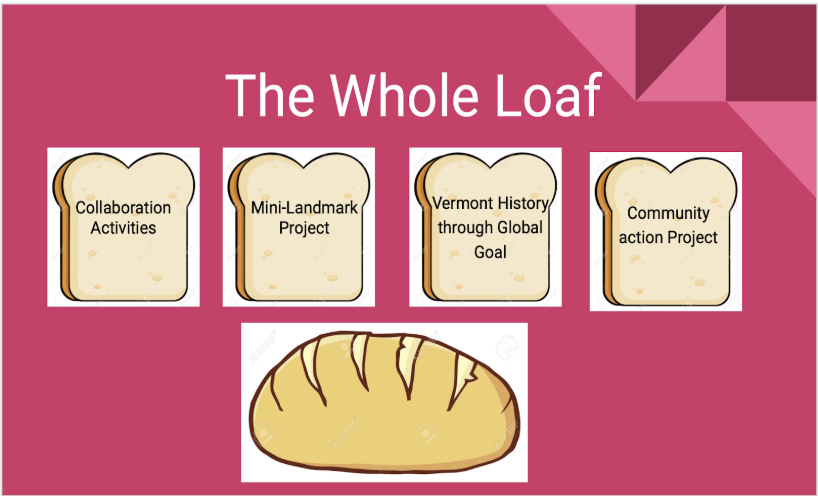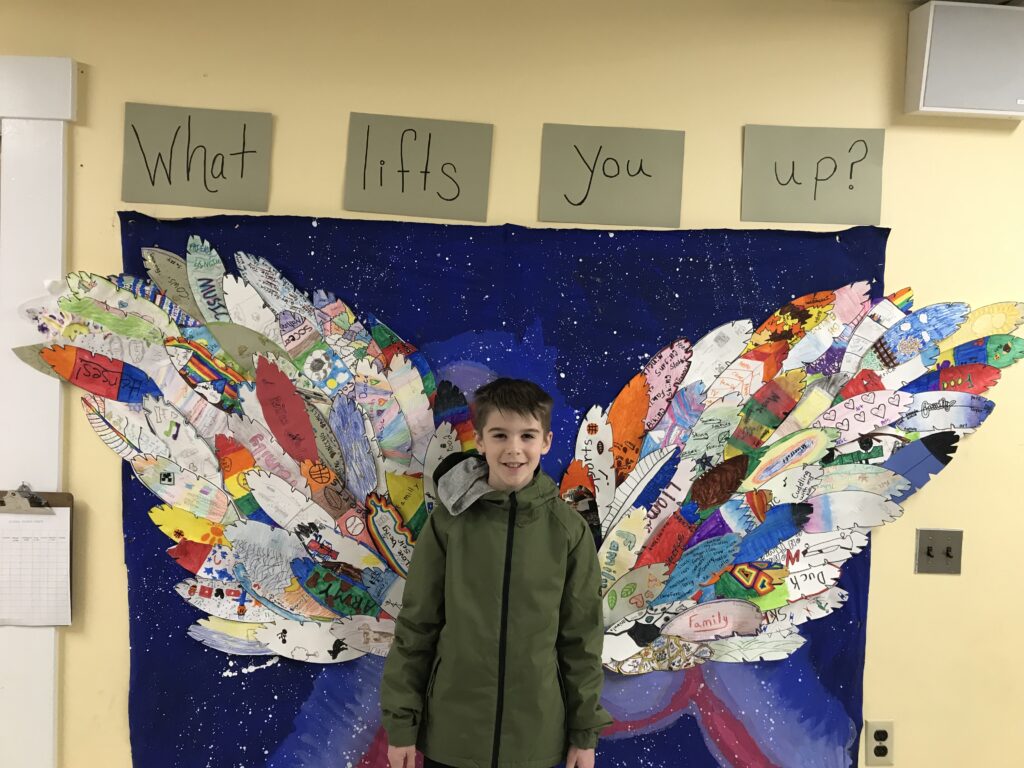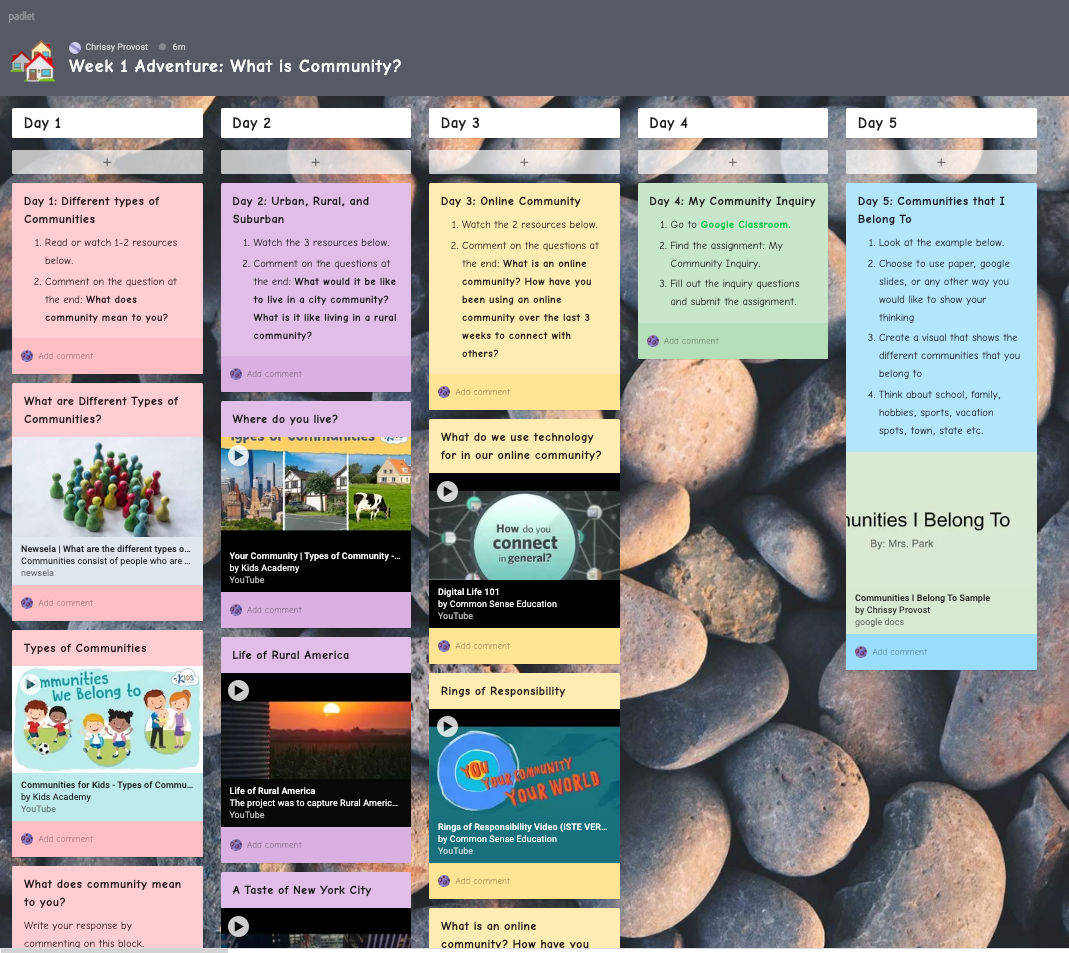How do we help students connect to their communities, and consider how to enrich community life?
That’s the question Chrissy Park and her 3rd through 5th grade students at Burke Town School, in West Burke VT, have spent their year exploring. Together and in-person, they considered ways they could all take part in their community. Now, as Chrissy and her students face the move to remote learning, they continue that work with renewed vigor.

The Connect Vermont Students to Community Project
After Burke Town School moved to emergency distance learning, Chrissy built digital structures to reinforce and expand on the community work. She created a unit that uses project-based learning structures to shape remote learning.
She built the Connect Vermont Students to Community Project: a four-week online adventure exploring the questions:
- What is community?
- Why is community important?
- Thinking through the lens of the Global Goals, how has community been effected by the pandemic?
- What do we want to do in the fall to bring community back together?
The unit invites students to consider ways to come together virtually. It also encourages them more than ever to become active, contributing members of their local communities.
She started Week 1 with a Padlet to create daily guides for students. It featured playlists of resources.
You can find her emerging plans here. Feel free to make a copy for your own use — thank you, Chrissy!
And for dealing taking the project offline, due to bandwidth or screen fatigue, Chrissy’s also created a slideshow of this project, where the resource links could be viewed separately or printed out.
But taking the project online worked so well because of all the scaffolding Chrissy did with students in person, in the before time. She worked with them the entire year on this idea of community connection.
This community work took a village: Learning Lab VT
To focus on community and civic engagement, Chrissy signed up for Learning Lab VT, a year-long project that brings educators together to support each other in pursuing personalized learning. Chrissy’s inquiry question?
How does personalization and project based learning help students connect and engage in their local community?
Chrissy and her teaching team intentionally prepared students to have the skills to engage in community work. They wanted all students, no matter their age, to participate and find success. With the support of the Learning Lab, they invited the Burke 5th graders into roles as consultants and co-planners in this multi-age class. Students quickly took on leadership.
Scaffolding skills and habits to self-direction: introducing the whole loaf metaphor
Early in the school year, Chrissy recognized the need to provide clear, concrete, step-by-step supports for PBL work.
“At the beginning our our PBL time we rushed a lot of things and it ended with students not understanding the purpose of what we were doing and not understanding how what they were doing connected to the real world. We took a step back and came up with 4 slices to our loaf.
We started by having students doing collaboration activities which helped them feel closer to their team members and also helped us realize potential group issues early on in the project. And we then went to our second slice, which was having students practice being a historian by researching a VT landmark. They used a rubric to create an infographic that displayed their findings. Third slice: together we then researched how the global goals were being worked on throughout the world community. We launched our PBL website with all the links they needed. Easy access to a help link on the website supported more independence during project work time.”
Throughout the different slices of the year, students experienced different scaffolds and supports to aid in self-direction and independence. Google Forms helped support a communication flow between teachers and students. Exit tickets and an engagement survey allowed students to provide feedback for mid-project corrections. The Help Link on the project website provided a just-in-time space for students to reach out when necessary but maintain independence. And the Google Doc Project Note Catcher helped group members keep track of the daily work and for teachers to monitor progress and provide necessary supports along the way.

Students as project planning partners and team leaders
Chrissy and her team recognized the importance of students taking an increased role in the design, development, and evaluation of learning in a PBL environment as a key indicator of personalized learning environments.
Kallick and Zmuda suggest, “a balanced approach as students become more capable being increasingly more self-directed and educators find more opportunities to allow students the space to participate in design work.” What Progressively Student Driven Means in Personalized Learning
Chrissy gathered her 5th grade student leadership team and explained their role in this work. As leaders they would partner with her by providing feedback, help plan activities and serve as in-class supports during PBL time.
First, she tasked them to choose standards for different phases of the project. Next, the student leadership team created transferable skills rubrics. They based them on scales they had been using for PBL. The scales focused on what makes for successful collaboration and civic engagement. And, they planned whole group collaboration activities because they recognized the importance of practicing this important skill. Together they created a powerpoint presentation about engagement, personalization and effort and how all three of these connect. Finally, they helped collect and analyze data. And then they proposed solutions to problems that arose from the data analysis and during PBL work time.
The two-pronged approach of scaffolds and student leaders? That was sure to set up these Burke Town students to be successful.
How might you create an extended community of Vermonters coming together with a shared purpose?




Your point of view caught my eye and was very interesting. Thanks. I have a question for you.